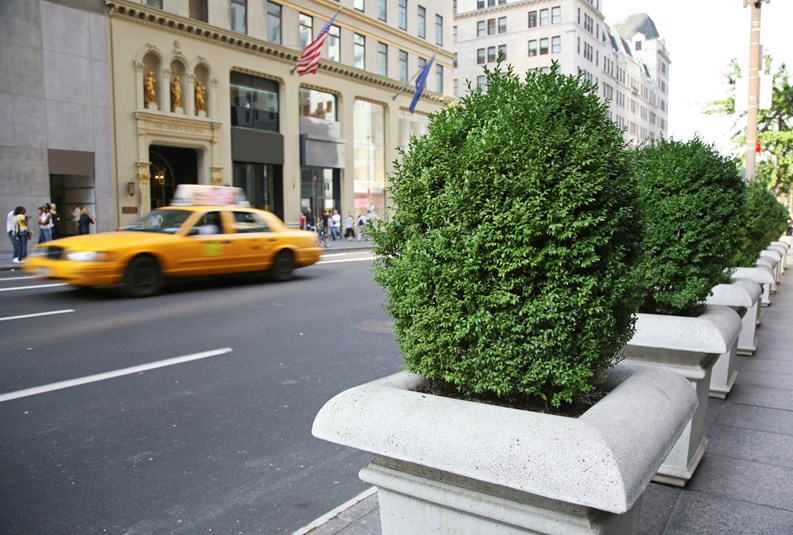In a city that has been referred to on more than one occasion as a 'concrete jungle,' it should come as no surprise that flashes of lush plant life are rare, at least when compared to suburban enclaves, and often relegated to parks and other isolated spaces. One might hypothesize, therefore, that people would celebrate a little greenery wherever they can get it.
However, given that space in New York City is at such a premium, trees and other plant-life can occasionally be the cause of dust-ups. Roots, fruits and other detritus can cause skirmishes between neighbors, as illustrated recently in a September 13th piece in The Real Deal in which Sean Lennon, the son of rock legend John Lennon, was ordered by a judge to remove a 60-foot ailanthus due to complaints by Gary and Addie Tomei, the parents of Oscar-winning actress Marisa Tomei.
In condominium and co-op living, where even minute decisions are subject to review by committee, disagreements can flare up over most anything—and planting trees, shrubs, and other flora is no exception.
The Process
Before delving into how tree and plant-related arguments happen in condos and co-ops, it's worth establishing how things even get planted in said communities.
“The planting of trees in outdoor common areas is the responsibility of the board, and nobody—shareholders or unit owners—is allowed to put anything there without the explicit written permission of those representatives,” explains Jay Cohen, the vice president and director of operations at A. Michael Tyler Realty Corp., a property management and brokerage firm with offices in New York City and Long Island. In fact, according to Cohen, a board, for the most part, has carte blanche to plant whatever it wants without approval of residents.
“If a board wants to plant something, say, in a courtyard, it can do whatever it wants,” Cohen continues. “They usually get a garden committee together to make recommendations and propose a budget, and then the board will approve the committee's suggestion and enact it.”
But even if a board is omnipotent in regard to what it can plant and where, that won't necessarily silence dissent. “In co-ops particularly, there is always some disagreement over what should be planted and when,” says Michael T. Manzi, Esq., a member of the New York City-based law firm of Balber Pickard Maldonado & Van Der Tuin, PC. “Someone won't like the flowers, or have an issue with a particular tree; it's almost at the level of a lobby renovation, wherein you just can't please all of the people all of the time. And I've seen situations where the comments and objections get out of hand, entirely out-of-proportion given the subject. Certain residents simply want ground cover, or they would prefer an alternate plant. Others just naturally like to micromanage, while others still may feel that the endeavor is too much of an expense.”
The Root of the Problem
As can be expected in such a developed, populated environment, New York City has specific restrictions as to what can and cannot be planted, much of which stems from spatial considerations, in effort to prevent overgrowth from physically getting in the way of pedestrians or even vehicles.
One of the main considerations when planting a tree is to ensure that the roots don't grow in a way that they will unsettle the concrete, thereby highlighting that it's the obligation of the planter. “When roots grow such that they don't have room to properly expand, they can lift up a sidewalk,” says Burt Wallack, owner of Wallack Management Company in New York City. “And we make sure to go around each fall and spring to check where we have to trim anything back such that it doesn't become a tripping hazard.”
“Roots are probably the biggest issue, as they are by nature invasive, and they get into things and seek to expand along with the tree,” agrees attorney T. Austin Brown, principal of the The Austin Brown Law Firm in Manhattan. “They can lead to leaks and punch holes in walls.”
The aforementioned leaks are another major source for strife. “Sometimes unit owners have roof access, and, despite the house rules clearly stating that nothing can be planted up there, an owner will go ahead and do something like place potted plants anyway,” continues Brown. “That can lead to leaks, and subsequently a dispute, which usually ends with the perpetrator paying to fix the leak.”
Uninvited Guests
A somewhat less intuitive downside to tree pits is that they can attract rats. And while one can install a guard inside the tree pit to prevent access from pesky vermin, the installation requires the removal and subsequent replanting of anything already inside that tree pit, an endeavor that may carry its own consequences.
“I recently had an incident where a board had made arrangements for pit guards to be installed,” recalls Manzi. “The vendor removed the plants, placed the guards and returned the plants, but the plants didn't survive the transition. Even though the co-op made arrangements to have new plants put in very quickly, some people were still very upset over the original plants' demise. And there's no way that they could have installed the guards otherwise. Had they opted to wait until replanting season to install the guards, the rat issue would have become quite severe. The board just apologized and suffered through until the perturbed owners moved on, but this was another example of an issue where the reaction was not proportional to the actual problem at hand.”
R.I.P. for Tree
One last area that can cause some contention—although less so internally—is tree removal. The city only permits that an association cut down a tree once it's completely dead, but boards may occasionally feel that an eyesore needs be cast away, and thus recklessly ignores the rules.
“I've had boards say to us, 'this tree is half dead. Cut it down,'” says Wallack. “And we'll tell them that we cannot, and will not do so, because it goes against code. If you want to have a tree removed in a way that will ensure you avoid a fine, you'll call the city once it's dead, and they'll send their arborist to review and permit its expulsion.”
Half-dead trees don't decompose overnight, and the city pays attention. If a board tries to get rid of a flagging tree during the witching hour, officials are more likely than not to find out, and will not hesitate to levy a fine.
All of this aside, in the grand scope of things, peppering a property with plant life is usually seen by residents as a net positive. While conflict will always rear its ugly head, having restrictions in the bylaws and strictly following city ordinances should ensure that a board can take advantage of what little green space it has in a way that is amenable to all parties involved.
Mike Odenthal is a staff writer for The Cooperator and other publications.






Leave a Comment